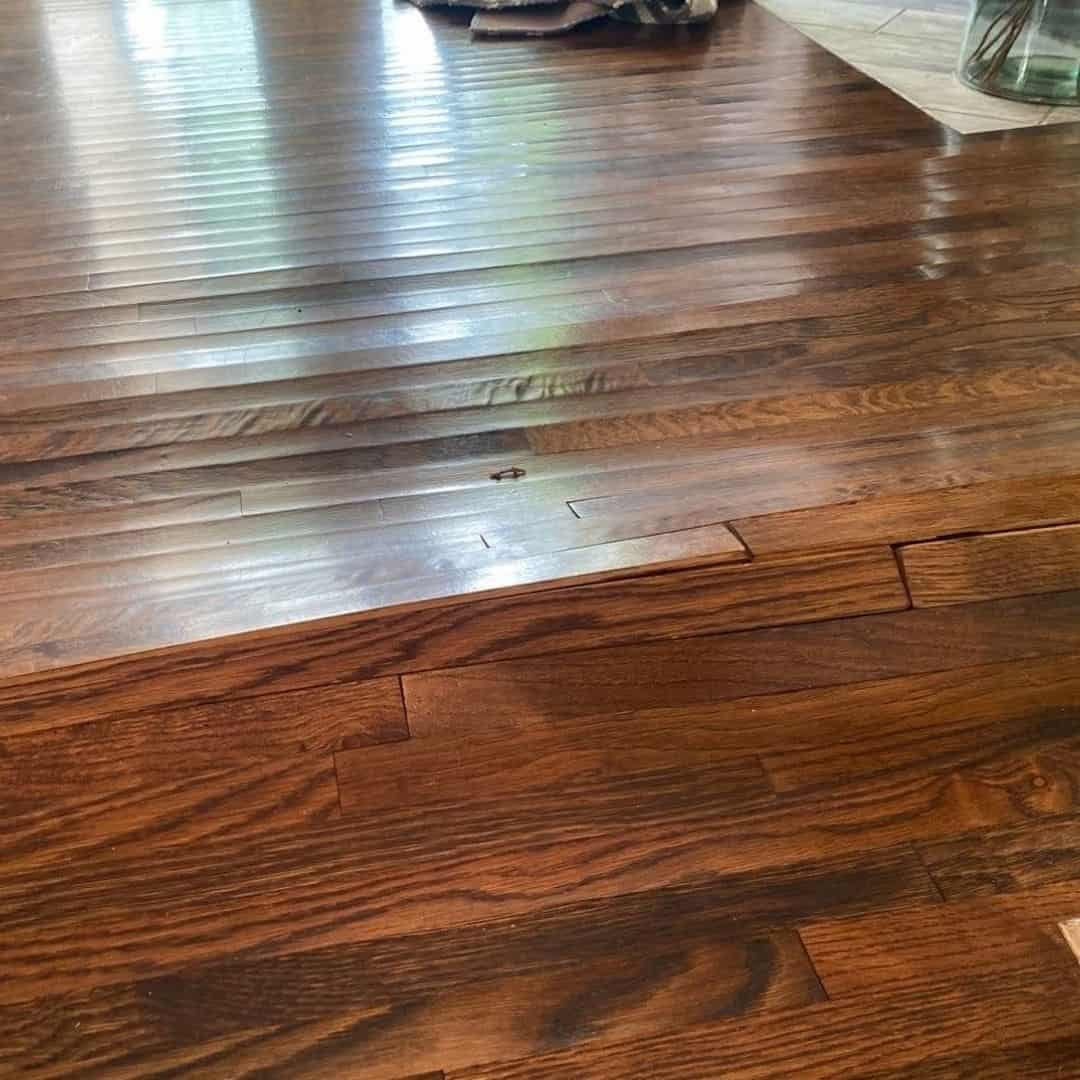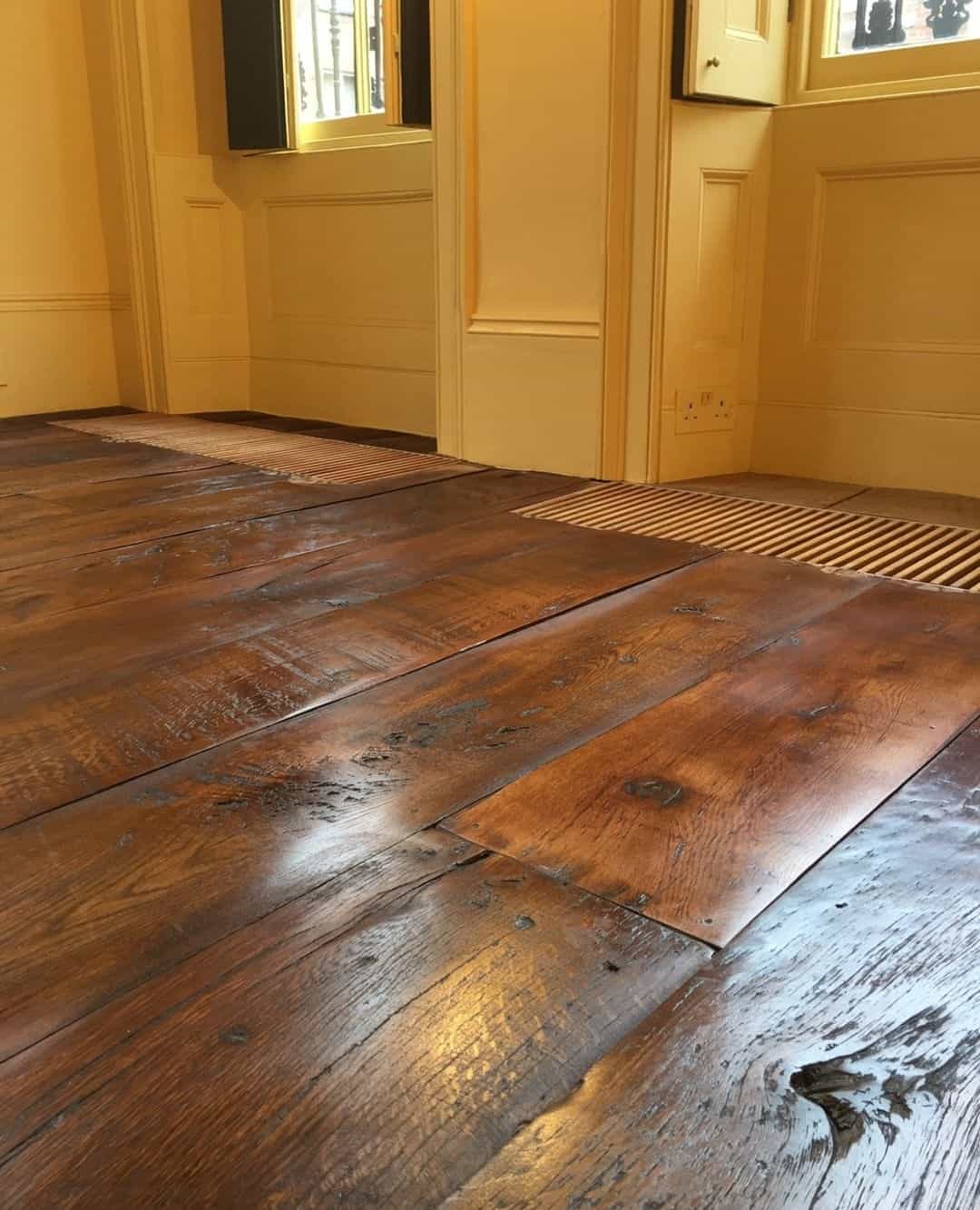Wooden flooring can improve the aesthetic of any home. However, their beauty can quickly turn ugly if the wood starts to warp. Those perfectly laid planks you had were gone, and now you have uneven flooring, which can be uncomfortable and dangerous.
But how to fix a warped floor, and can it be done? We have all the info you need. We’ll help give you practical solutions to fix your flooring, and ensure it doesn’t get damaged again. Let’s get started!
Table of Contents
How To Fix A Warped Floor?
Can You Fix a Warped or Cupped Floor?
Firstly, we wanted to address the question of whether or not you can fix damaged flooring. It can be difficult, and it depends on a few different factors. Often it needs to be replaced, especially if the wood is badly warped.
The biggest factor in whether they can be fixed or not will depend on the type of flooring you have. Solid wood floors can often be fixed. Engineered wood floors are difficult to fix, but it is possible. However, warped laminate flooring will need replacement.
The other biggest factor is how damaged the flooring is. Slight cupping issues can often be resolved quite easily. However, if there is serious warping damage, it’s often easier to just replace the affected areas with new flooring.
Is Your Floor Cupped or Warped?
You may hear these two terms used to describe damaged flooring, and it’s easy to think they refer to the same thing. However, cupping is a type of warping, whereas the term warping refers to a greater range of wood issues.
There are generally five ways that wood can be warped, and they are:
- Bow – This is where both ends flat ends of the wood will bend towards each other.
- Crook – This is a bend on the side of the wood, which means the plank starts to form a ‘C’ shape.
- Kink – Kinks refer to planks that have just one end raised and not the other.
- Twist – As the name implies, twists are when the wood curves in opposite directions at each end.
- Cup – When the wood forms a soft ‘U’ shape, with both ends being raised.
When we talk about warped flooring, it’s almost always the cupped type that we are dealing with. That’s due to a few reasons but mainly due to the even spread of moisture, and that warping upwards is the natural direction for travel for wood that has been locked into place.
While cupping is usually the type of warped flooring we’re dealing with, the information in the rest of this article will apply to all types of wood warping.

What To Do Before Fixing Warped Wood
What causes the wood to warp? The answer is very simple: water. Many people make the mistake of fixing their warping issues without thinking about why they became warped in the first place. That’s until the flooring they laid down instantly becomes warped again!
You shouldn’t even think about fixing your warped floors before you address the moisture issue. You need to work out where it’s coming from and take action to stop it. Let’s look at the main culprits:
- Wet mopping – There are plenty of people who wet mop floors without realizing that they will be damaging their wood. When mopping your wooden floors, you either need to use a dry mop or use the minimum amount of water possible.
- Spills – Is there a frequent spill in your kitchen? Or perhaps water drips on the floor when washing your dishes? If you have a small patch where warping is happening, then it may just be from a spillage.
- Humidity – High humidity in your home can also be the source of warped wood. This is especially true if you have a home where the humidity levels can change dramatically. If this is the case, it can be a good idea to get a humidifier/dehumidifier that can keep your home at a constant humidity level.
- Leak – This is usually an obvious cause of wood warping, but not always. You may have an ingress of water from outside that isn’t immediately obvious. If you lift up your floorboards and find that the underside of them is damp, then you need to find the source of the water and fix it.
Type of Flooring
There are three main types of wooden flooring that you can have. The solution for each one is different, and therefore it’s important to know which one you have.
- Laminate – Laminate flooring is made using a variety of materials. Some of them have a base, and on that will be strips of cheap wood, such as plywood or fiberboard. This helps to give the panels some rigidity.
On top of that middle layer of plywood or fiberwood is effectively a synthetic photograph of wood, which gives you the nice image that you see on your flooring. Finally, another layer on top is added, which is clear and helps protect the image underneath.
There are many reasons to love laminate flooring, especially as it’s the cheapest option available. It’s also very easy to install and has a good level of durability, as long as it doesn’t get wet.
However, importantly for us, it is highly susceptible to water damage. It will quickly swell with any water ingress, and the damage caused is irreversible. If you have warped laminate flooring, the affected areas will need to be replaced.
- Engineered wood – As with laminate, engineered wood also has multiple layers, but this time, real wood is used. Depending on the quality, there are usually two base layers made from cheaper wood, and on top of that will be a thin layer of high-quality wood. A protective finish may also be applied.
Engineered wood is often quite durable, and due to its multiple layers, it can often be quite resistant to warping. It doesn’t bend with moisture too easily, and many find it to be a great cheaper alternative to solid wood flooring.

While durability may be high, it can be problematic when it does warp. Due to the thin top layer, it can only take a very small amount of sanding. Using heat to repair it can work, but often the results are mixed.
- Solid Wood – As the name implies, this is when you have solid planks of wood laid down on your floor. Usually, these boards are around ¾” thick and made from high-quality wood, which makes them the most expensive option.
Many see them as the most attractive option, and thankfully, they are often the easiest to fix when it comes to warping. That’s because they can be sanded down without you needing to worry about the top layer.
The downsides here are obvious. If you do need to replace the flooring, then it’s going to be expensive. It’s also the most difficult type of flooring to install.
4 Options for Warped Flooring
For those that want to solve their cupping issues, there are four different options available to you.
1. Wait
If you have recently noticed your warping issues, see if there have been any spills or leaks. If not, then there’s a chance that your cupping issues have been caused by atmospheric changes, often due to the changes of season.
Slight cupping issues can resolve themselves over time. Before you go replacing your flooring, it’s good to check if this is a temporary issue. As we mentioned before, having wild fluctuations of humidity in your home is bad news for flooring.
2. Sand
This is not a possibility with laminate flooring. It also shouldn’t be done on engineered wood floors unless the cupping issue is minor. For solid wood flooring, this is going to be the easiest and quickest solution to your problems.
All you need is a heavy sander to remove those raised edges until they sit back flush on the floor. Make sure that you apply a protective coating for your wood once completed. Also, ensure you have addressed any underlying moisture issues.

3. Apply Heat and Pressure
It’s important to note that this has mixed results. However, it can be a good idea to try if you haven’t got the budget to pay for a new floor. Here you can apply heat (through the likes of an iron) along with moisture (such as a damp cloth) to try and get the boards back flat again.
The problem here is that you’ll also need to apply pressure to the board, usually through weights. It means it can be a painstaking process if you need a large area of floor repair. There is also a chance that your boards will re-cup when they dry out.
We’d recommend trying this with one board and seeing if it works. This is usually best for engineered wood flooring, as sanding solid wood floors is easier and have better results. Again, this method cannot be used on laminate flooring.
4. Replace
Sadly with flooring, often the best idea is to replace it. This is almost always the only solution for laminate flooring, as moisture will ruin its composite layer. Thankfully it’s the cheapest form of wood flooring to replace.
Whether you need to replace engineered flooring or not will depend on the quality of the materials used and the severity of the warping. Before replacement, it’s a good idea to try sanding, but if the top layer is too thin or the bend is too severe, you may ruin the finish. Solid wood flooring can usually be repaired.
Conclusion
When it comes to how to fix a warped floor, it can be a little complicated. It’s a good idea to assess the damage and check what type of flooring you have, but often replacement will be the best idea.
But before you do anything, ensure that your moisture issue is solved; otherwise, you’ll get the same issues all over again.